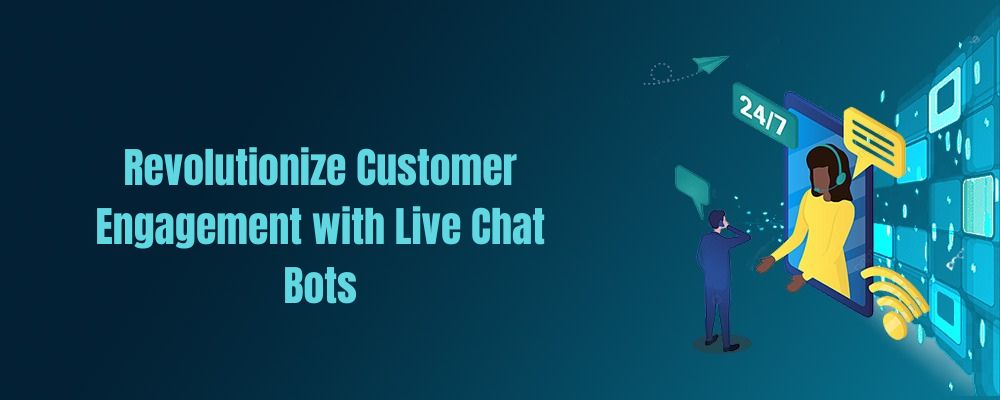Introduction to Live Chat Bots
Defining the Conversational Powerhouses
In our increasingly digitized world, live chat bots have emerged as revolutionary tools for engaging with users, providing automated customer support, and answering queries in real-time. These computer programs are designed to simulate human conversation, offering a seamless and interactive experience for individuals visiting websites or messaging platforms.
Utilizing technologies such as artificial intelligence (AI) and natural language processing (NLP), chat bots have become indispensable assets for businesses across various industries. The primary purpose of a live chat bot is to assist users by delivering instant responses to their inquiries.
By mimicking human interaction, chat bots alleviate the need for users to wait for assistance from customer support representatives. Whether it's guiding customers through an online purchase or answering frequently asked questions, these virtual assistants are equipped with the necessary capabilities to handle a wide range of tasks efficiently.

The Evolutionary Journey of Chat Bots
The inception of chat bots can be traced back to the mid-20th century when early pioneers began exploring the possibilities of automating conversations. However, it is in recent years that significant advancements in AI and NLP technologies have propelled chat bots into new frontiers of functionality. With each passing year, these intelligent algorithms have grown more sophisticated and capable.
Thanks to breakthroughs in machine learning techniques, live chat bots can now process complex natural language inputs and generate contextually appropriate responses. This evolution has enabled them to navigate dynamic conversations and adapt their interactions based on user input.
As AI continues its rapid advancement, the potential applications for live chat bots continue expanding exponentially. From customer support services in e-commerce platforms like Facebook Messenger Chatbots or Slackbots to personalized restaurant recommendations provided by food-oriented chatbots like "FoodieBot," these virtual entities are becoming ubiquitous companions within our digital ecosystem.
Through continuous learning from user interactions and constant refinement, chat bots are constantly improving their conversational skills. This growth is fueled by the ever-increasing volumes of data they process and the insights they garner from each conversation.
As these bots gain experience, their ability to understand user intent, provide accurate responses, and engage in meaningful dialogues only strengthens. Whether it's assisting sales representatives in automating lead generation or providing immediate customer support through a user-friendly interface, chat bots have become indispensable tools for businesses seeking to enhance customer experiences while optimizing operational efficiency.
In the next section, we will delve deeper into how live teloz chat bots actually work and explore the underlying technologies that power their capability to interact with users in real-time. Stay tuned as we explore the fascinating world of Natural Language Processing (NLP), machine learning algorithms, and integration with messaging platforms that make live chat bots an invaluable asset in today's digital landscape.
Natural Language Processing (NLP)
NLP enables chat bots to understand and interpret user inputs, including text or voice messages.
Natural Language Processing (NLP) is a branch of artificial intelligence that plays a crucial role in enabling chat bots to comprehend and respond to user inputs effectively. NLP allows these AI-powered chat bots to understand the nuances of human language, whether it is in the form of text or voice messages. By employing various algorithms and techniques, NLP helps chat bots process and analyze user queries to provide relevant and accurate responses.
Text classification is one of the fundamental tasks performed by NLP in chat bot systems. It involves assigning predefined categories or labels to incoming text messages.
This categorization enables the chat bot to determine the intent behind a user's query, allowing for more precise responses. Sentiment analysis is another important task within NLP, enabling the chat bot to understand the emotions conveyed by users through their language.
By detecting positive or negative sentiment, chat bots can tailor their responses accordingly. Entity recognition is yet another key function performed by NLP in chat bot systems.
It involves identifying specific entities such as names of people, places, organizations, dates, currencies, and more within user inputs. This information extraction process helps facilitate meaningful conversations with users as it allows for accurate identification of relevant details mentioned in their queries.
Additionally, language generation is an essential aspect of NLP in which algorithms are employed to generate human-like responses from pre-defined templates or dynamically constructed sentences based on context and detected entities. This capability ensures that chat bots can produce coherent and contextually relevant replies that closely resemble natural conversation.
Machine Learning Algorithms
Machine learning algorithms play a pivotal role in enhancing the performance and capabilities of chat bots over time. These algorithms enable chat bots to learn from past interactions with users and continuously improve their responses.
Supervised learning is one technique used to train chat bots. In this approach, human-generated training data is provided, consisting of input queries and the corresponding desired responses.
By analyzing this labeled data, the chat bot learns patterns and associations between different inputs and outputs, enabling it to produce accurate responses when encountering similar queries in the future. Unsupervised learning techniques are also employed in the training of chat bots.
In this case, the AI algorithms analyze large amounts of unlabeled data to identify patterns and structures within the input information. By understanding these hidden structures, chat bots can uncover relationships between various user queries and generate appropriate responses based on their learned knowledge.
Integration with Messaging Platforms
To ensure seamless communication with users, chat bots can be integrated with popular messaging platforms such as Facebook Messenger, WhatsApp, or Slack. This integration allows businesses to leverage existing platforms where their customers are already present.
Integrating a chat bot with messaging platforms involves creating a bridge between the chat bot backend system and the specific platform's API. This enables bidirectional communication between users and the bot through familiar messaging interfaces they are accustomed to using daily.
By integrating with messaging platforms, businesses can reach a wider audience while providing excellent customer support experiences. Users can interact with these AI-powered bots just like they would with any other contact on these platforms—sending messages, receiving instant replies, and engaging in interactive conversations without having to switch between different applications or websites.
Furthermore, integration allows businesses to leverage additional features offered by these messaging platforms like multimedia message support (images/videos), rich formatting options (emojis/markdown), or even interactive buttons for quick selections within conversations. These enhanced capabilities contribute to an improved user experience and more effective engagement through chat bots.
Benefits of Live Chat Bots
Improved Customer Service Experience
Live chat bots are revolutionizing the way businesses interact with their customers, offering an enhanced customer service experience. One of the primary advantages is their ability to provide instant responses and round-the-clock availability.
Unlike human agents who have limitations in terms of working hours, chat bots can engage with customers anytime, anywhere. This ensures that users receive timely assistance and support regardless of time zones or working hours.
Moreover, chat bots excel in handling repetitive tasks efficiently. Frequently asked questions and common issues can be easily addressed by these AI-powered assistants without any delay or errors.
By automating these routine queries, chat bots free up human agents' time, enabling them to focus on more complex customer issues requiring human intervention. This not only improves the customer service experience but also enhances agent productivity.
Cost Savings for Businesses
Implementing live chat bots brings tangible cost savings for businesses across various industries. Firstly, employing a large customer support team can be a significant financial burden for companies. However, by leveraging AI-powered chat bots, businesses can reduce the need for extensive human resources dedicated solely to customer support.
This reduction in manpower results in substantial cost savings. Secondly, while hiring additional human agents incurs recruiting and training expenses over time, integrating chat bots into existing systems involves relatively lower costs in comparison.
Once implemented effectively, these virtual assistants continue to operate proficiently without requiring constant supervision or additional training. Furthermore, live chat bots possess the capability to handle multiple conversations simultaneously without compromising the quality of engagement with each user.
Unlike humans who may struggle with managing several conversations concurrently while maintaining consistency and accuracy; AI-powered chat bots possess this inherent multitasking ability that helps improve response times and overall efficiency. In sum, deploying live chat bots not only improves operational efficiency but also serves as a cost-effective approach to delivering exceptional customer service.
Conclusion
Live chat bots have transformed the customer service landscape, offering businesses a unique opportunity to provide round-the-clock support and improve customer satisfaction. With their ability to deliver instant responses, handle repetitive tasks efficiently, and reduce the need for large customer support teams, chat bots prove to be valuable assets that optimize user experience while saving costs.
By integrating AI-powered technology into their operations, businesses can ensure seamless and personalized interactions with customers. As technology continues to advance, it is evident that live chat bots will play an increasingly significant role in enhancing customer service capabilities across various industries.
Therefore, embracing this conversational AI-powered technology opens up new avenues for businesses to thrive in an ever-evolving digital landscape. The future holds immense potential for further advancements in chat bot resources and documentation as organizations continue to explore innovative ways to leverage this technology effectively.
With the continuous progress of artificial intelligence and the growing demand for convenient customer support solutions, the prospects for live chat bots are promising. By incorporating these intelligent assistants into their strategies proactively, businesses can enhance user experiences while reaping substantial benefits both operationally and financially.


No comments yet